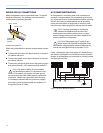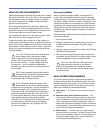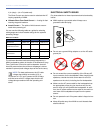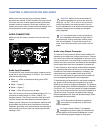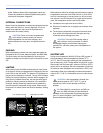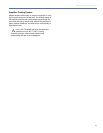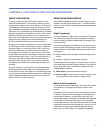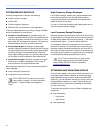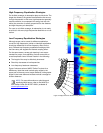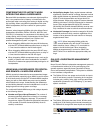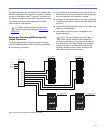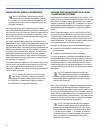
21
CHAPTER 4: LINE ARRAYS AND SYSTEM INTEGRATION
ABOUT LINE ARRAYS
Line arrays achieve directivity through constructive and
destructive interference. For example, consider one loud-
speaker with a single 12-inch cone radiator in an enclosure.
The loudspeaker’s directivity varies with frequency: when
the wavelengths reproduced are larger than the driver at low
frequencies, it is omnidirectional; as the frequency increases
(and the wavelength is comparable to the size of the driver),
directivity narrows. Above around 2 kHz, it becomes too
narrow for most applications, which is why practical system
designs employ crossovers and multiple elements to
achieve controlled directivity across the audio band.
Stacking two of these loudspeakers, one on top of the other,
and driving both with the same signal results in a different
radiation pattern. At common points on-axis, there is con-
structive interference, and sound pressure increases by
6 dB relative to a single unit. At other points off-axis, path
length differences produce cancellation, resulting in a lower
sound pressure level. In fact, if you drive both units with a
sine wave, there will be points where the cancellation is
complete, which can be shown in an anechoic chamber.
This destructive interference is sometimes referred to as
combing.
A typical line array is comprised of a line of loudspeakers
carefully spaced so that constructive interferences occur
on-axis with the array, and destructive interferences (comb-
ing) are aimed to the sides. While combing has traditionally
been considered undesirable, line arrays use combing for
positive effect: to control directivity.
MINA CURVILINEAR ARRAYS
Each MINA loudspeaker employs two low-frequency cone
radiators and one high-frequency horn. To achieve optimal
results, it is important to understand how these components
work together.
High Frequencies
For high frequencies, MINA uses a very precise Constant Q
horn, developed using Meyer Sound’s anechoic chamber,
which provides a consistent beamwidth of coverage in the
horizontal plane.
In the horizontal pattern of a MINA array, the horns work to
produce a wide 100-degree coverage; in the vertical pattern,
however, Meyer Sound’s REM technology provides narrow
coverage to:
■ Minimize destructive interference between adjacent ele-
ments
■ Promote coupling to throw longer distances
As more elements are arrayed in a vertical column, energy is
more effectively projected through coupling. The amount of
energy projected can be controlled by altering the splay
angles between elements:
■ Wide angles: yield more vertical coverage.
■ Narrow angles: yields narrower vertical coverage, allow-
ing the focused energy to achieve longer throws.
Mid to Low Frequencies
The directional control of the array in the mid to low frequen-
cies depends on the length of the array (number of ele-
ments).
Directional control is achieved when the length of the array
is similar or larger than the wavelength of the frequencies
reproduced by the array. As frequencies get lower and
wavelengths longer, the number of cabinets employed has a
critical effect on the directional control. The more MINA
loudspeakers that are used, the more directional the vertical
beamwidth becomes at lower frequencies. However, at low
frequencies the splay angle between cabinets has little
effect since the total length is not modified substantially.




